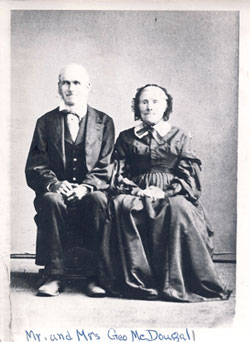In the Archives: A Path Less Traveled By
Editor’s note: We live in a time where women, and men, can easily and safely navigate any woods filled with dangerous wild animals, say in a helicopter, armed with a hunting rifle. Think Sarah Palin. In simpler times, people walked through the woods. And they just hoped not to stray from the path, to find themselves in the company of a literal or figurative grizzly bear, or – as Laura Bien describes in this installment of her local history column – wolves.
In the early 1800s, thick forest covered much of the land south of Ypsilanti.
The virgin forest nourished huge flocks of passenger pigeons on migratory routes passing north. Often they passed low enough to be knocked from the air with sticks. After one such harvest, according to one Ypsilanti city history, “at dinner that day, there was a tremendous pigeon pot pie, sufficient to satisfy everybody, although there were twenty at the table.”
But the forest also held danger. One large swamp in Augusta Township was named Big Bear Swamp, and wolves and panthers roamed in our county.
Into this wilderness in 1828 came Andrew Muir with his family. They had fled an economic recession and spiking farm rents in Scotland and immigrated with other relatives to America. Members of the McDougall family also made the trip.
After the weeks-long Atlantic crossing, 26-year-old Mary Muir and 29-year-old George McDougall married in Rochester, New York on Halloween in 1828.
The families traveled by boat and overland to Michigan. Andrew Muir bought a small farm near the intersection of modern-day Stony Creek and Bemis roads, about 6 miles south of Ypsilanti. He invited his daughter Mary and son-in-law George to share the property. However George, who had worked as a miller back home in Ayrshire, chose to settle just south of the small Ypsi settlement and work at its flour mill there.
Mary often walked down to her father’s farm late in the week to see her parents and stay overnight. On Sundays, George would travel down to visit and he and Mary would return to their home.
One winter day, Mary prepared to visit her parents. She set the table for her husband and made sure his dinner was ready for his return from the flour mill. Mary adjusted her pretty new calfskin shoes, tied her plaid wool scarf over her dress, and left the house. [Full Story]




